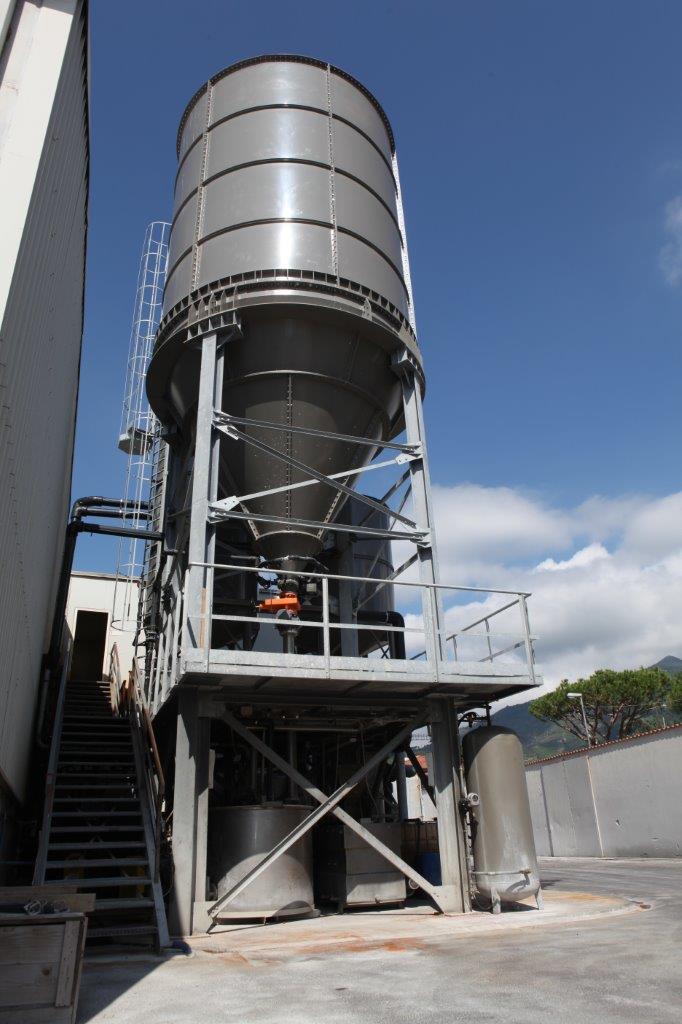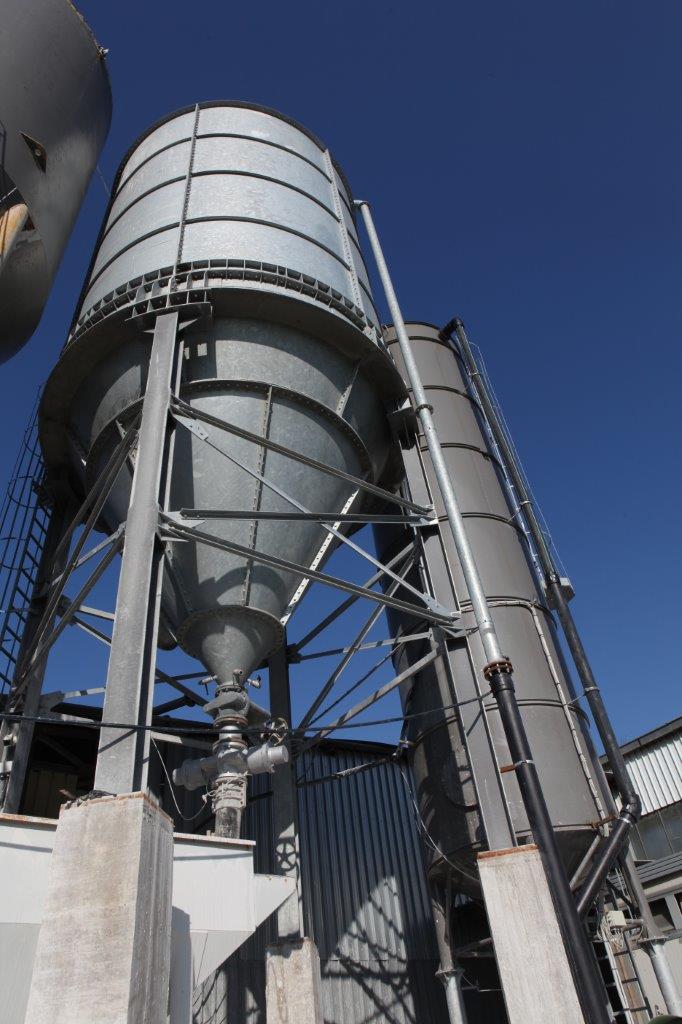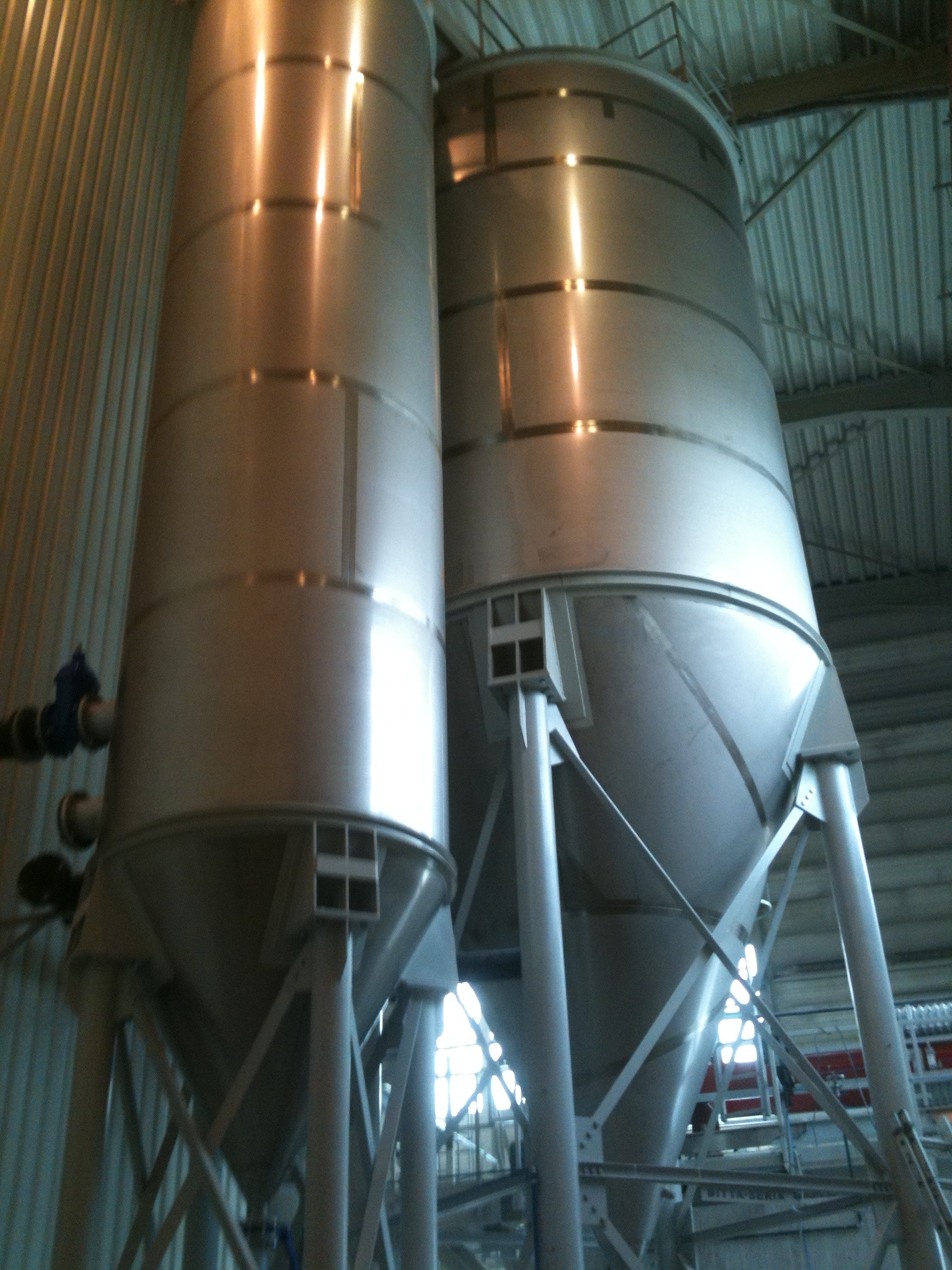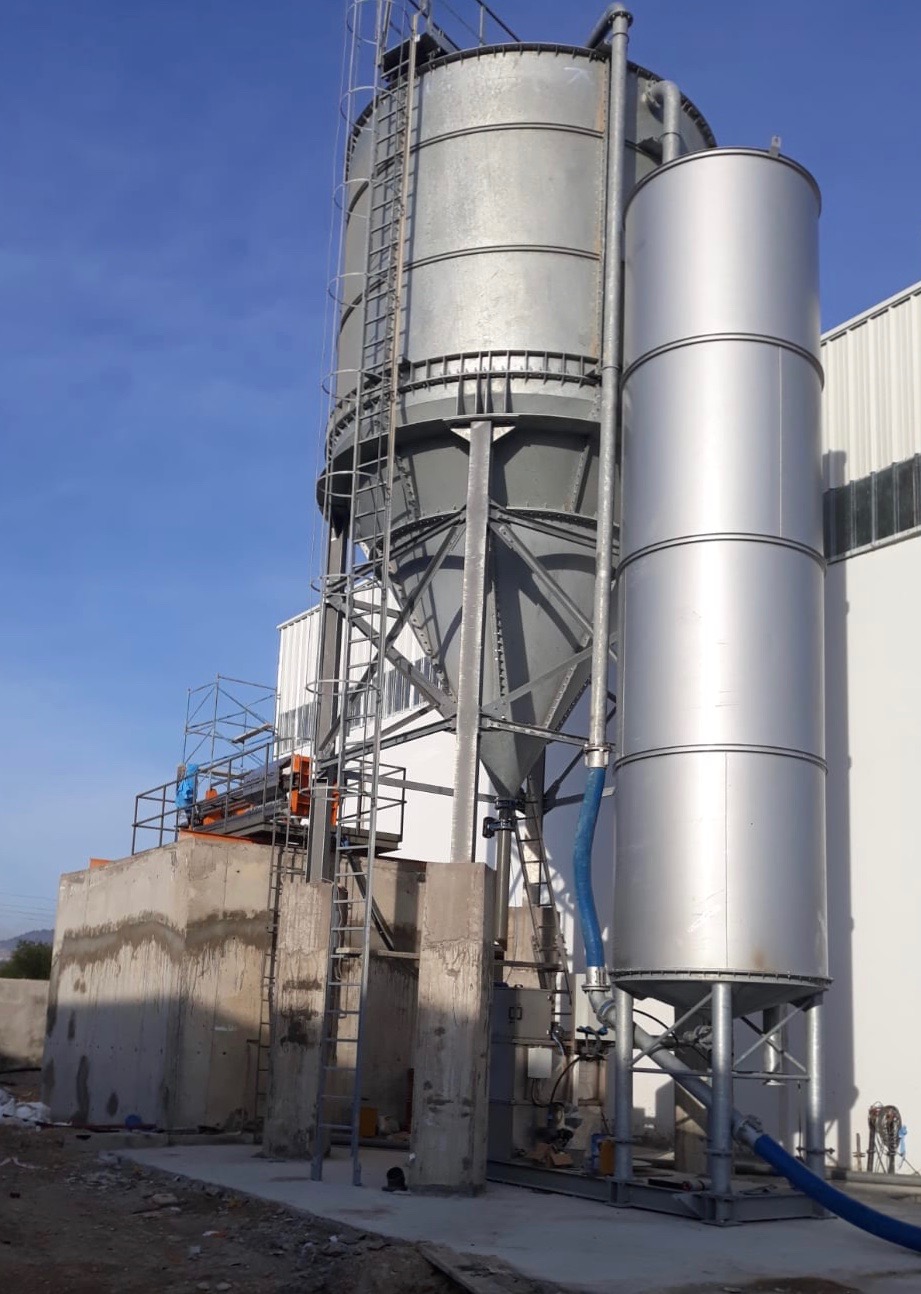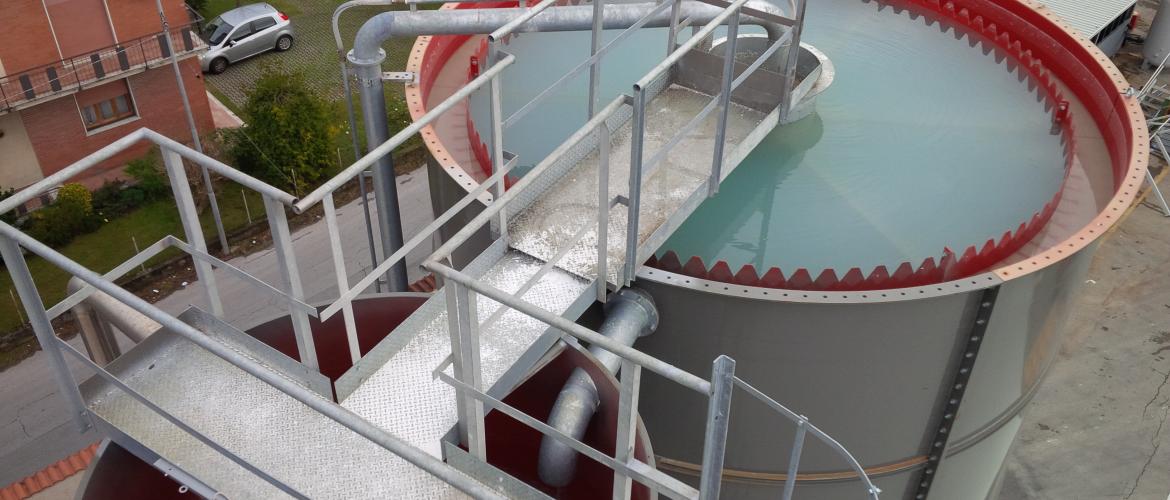
- Home
- PRODUCTS
- CLARIFIER
CLARIFIER
The clarified consists of an upper cylindrical part of adequate height, and a lower conical part with an appropriate degree of inclination. The flocculated turbid water inlet occurs in a pressure-shut tube placed in the center of the clarifier, which has the dual function of directing the hydraulic flow in the vertical direction downwards, not allowing the murky water to spread to the surface where it is instead it has the perfectly purified water weir, which is collected in the upper part; this is then conveyed or in a vertical piezometric tank in order to exploit the hydraulic head or in a grounded tank. The slender and conical shape allows a thick thickening of the sludge because it exploits the thrust of the considerable hydraulic head equal to the height of the decanter itself. At the lower end of the cone of the clarifier, there is the valve system for the automatic discharge of the clarifier itself, consisting of two valves, a safety manual and an automatic for sludge discharge, whose dimensions vary according to the size of the clarifier . The automatic valve is a balanced type with pneumatic control; it is normally closed in the rest position and is opened by the introduction of compressed air into the pneumatic cylinders. The manual valve has a cast iron body and corrosion-resistant protection after sandblasting. The purification capacity of the clarifier depends fundamentally on its diameter; obviously the greater the diameter, the greater the purification capacity. If more water needs to be treated than those indicated for each single clarification unit, they are placed in parallel, thus arriving to be able to treat any quantity of water satisfying the needs of any plant.
The lower part of the cone and the discharge valve can be protected from freezing by means of a thermal insulation made mainly of thermostated electric heaters.
Above the discharge valve is also a rinsing device which frees the valve from any mud blockages.
The mud is of a flocculent type: the particles gather in ever-larger flakes which then increase in speed. The turbid water moves in a vertical direction and goes from the bottom to the surface; it is therefore necessary that the falling speed of the particle to be separated is greater than that of the turbid: the direction of the upward slurry is opposite to that of the falling particle and therefore it is necessary that the latter has a speed greater than that of the turbid.



